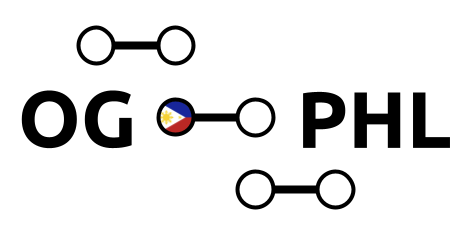"""
This module uses data from World Bank WDI, World Bank Quarterly Public
Sector Debt (QPSD) database, the IMF, and UN ILO to find values for
parameters for the OG-PHL model that rely on macro data for calibration.
"""
# imports
from pandas_datareader import wb
import pandas as pd
import numpy as np
import requests
import datetime
import statsmodels.api as sm
from io import StringIO
[docs]
def get_macro_params(
data_start_date=datetime.datetime(1947, 1, 1),
data_end_date=datetime.datetime(2023, 1, 1),
country_iso="PHL",
):
"""
Compute values of parameters that are derived from macro data
Args:
data_start_date (datetime): start date for data
data_end_date (datetime): end date for data
country_iso (str): ISO code for country
Returns:
macro_parameters (dict): dictionary of parameter values
"""
# initialize a dictionary of parameters
macro_parameters = {}
"""
Retrieve data from the World Bank World Development Indicators.
"""
# Dictionaries of variables and their corresponding World Bank codes
# Annual data
wb_a_variable_dict = {
"GDP per capita (constant 2015 US$)": "NY.GDP.PCAP.KD",
"Real GDP (constant 2015 US$)": "NY.GDP.MKTP.KD",
"Nominal GDP (current US$)": "NY.GDP.MKTP.CD",
"General government final consumption expenditure (current US$)": "NE.CON.GOVT.CD",
"External debt stocks, public and publicly guaranteed (PPG) (DOD, current US$)": "DT.DOD.DPPG.CD",
"External debt stocks, total (DOD, current US$)": "DT.DOD.DECT.CD",
r"External debt stocks (% of GNI)": "DT.DOD.DECT.GN.ZS",
r"Central government debt, total (% of GDP)": "GC.DOD.TOTL.GD.ZS",
r"General government final consumption expenditure (% of GDP)": "NE.CON.GOVT.ZS",
}
try:
# pull series of interest from the WB using pandas_datareader
# Annual data
wb_data_a = wb.WorldBankReader(
symbols=wb_a_variable_dict.values(),
countries=country_iso,
start=data_start_date,
end=data_end_date,
freq="A",
).read()
wb_data_a.rename(
columns=dict((y, x) for x, y in wb_a_variable_dict.items()),
inplace=True,
)
# Remove the hierarchical index (country and year) of
# wb_data_a and create a single row index using year
wb_data_a.reset_index(inplace=True)
wb_data_a["year"] = wb_data_a.year.astype(int)
wb_data_a = wb_data_a.set_index("year")
# Compute macro parameters from WB data
# Latest from WB WDI data is 2014, so use: https://www.treasury.gov.ph/?p=64737
macro_parameters["initial_debt_ratio"] = 0.60
macro_parameters["initial_foreign_debt_ratio"] = (
pd.Series(
wb_data_a[r"External debt stocks (% of GNI)"]
* (
wb_data_a[
"External debt stocks, public and publicly guaranteed (PPG) (DOD, current US$)"
]
/ wb_data_a[
"External debt stocks, total (DOD, current US$)"
]
)
).loc[data_end_date.year - 2]
/ 100
)
# zeta_D = share of new debt issues from government that are
# purchased by foreigners
# set to initial ratio without better info
macro_parameters["zeta_D"] = [
macro_parameters["initial_foreign_debt_ratio"]
]
macro_parameters["g_y_annual"] = (
wb_data_a["GDP per capita (constant 2015 US$)"]
.loc[2000:2019] # stop pre-COVID
.pct_change()
.mean()
)
macro_parameters["alpha_G"] = [
(
wb_data_a[
r"General government final consumption expenditure (% of GDP)"
].loc[data_end_date.year]
/ 100
)
]
except:
print("Failed to retrieve data from World Bank")
print("Will not update the following parameters:")
print(
"[initial_debt_ratio, initial_foreign_debt_ratio, zeta_D, g_y, alpha_G]"
)
"""
Retrieve labour share data from the United Nations ILOSTAT Data API
(see https://rshiny.ilo.org/dataexplorer9/?lang=en)
"""
target = (
"https://rplumber.ilo.org/data/indicator/"
+ "?id=LAP_2GDP_NOC_RT_A"
+ "&ref_area="
+ str(country_iso)
+ "&timefrom="
+ str(data_start_date.year)
+ "&timeto="
+ str(data_end_date.year)
+ "&type=both&format=.csv"
)
print("ILO data target = ", target)
response = requests.get(target, timeout=30)
if response.status_code == 200:
csv_content = StringIO(response.text)
df_temp = pd.read_csv(csv_content)
else:
print(
f"Failed to retrieve data. HTTP status code: {response.status_code}"
)
ilo_data = df_temp[["time", "obs_value"]]
# find gamma, capital's share of income
macro_parameters["gamma"] = [
1
- (
(
ilo_data.loc[
ilo_data["time"] == min(data_end_date.year, 2021),
"obs_value", # 2021 is latest year of data
].squeeze()
)
/ 100
)
]
"""
Calibrate parameters from IMF data
"""
# alpha_T, non-social security benefits as a fraction of GDP
# can't find this specifically, so use primary expenditures minus
# final consumption expenditures
# source: https://www.imf.org/external/datamapper/profile/PHL
macro_parameters["alpha_T"] = [0.2391 - 0.142]
""""
Esimate the discount on sovereign yields relative to private debt
Follow the methodology in Li, Magud, Werner, Witte (2021)
available at:
https://www.imf.org/en/Publications/WP/Issues/2021/06/04/The-Long-Run-Impact-of-Sovereign-Yields-on-Corporate-Yields-in-Emerging-Markets-50224
Steps:
1) Generate modelled corporate yields (corp_yhat) for a range of
sovereign yields (sov_y) using the estimated equation in col 2 of
table 8 (and figure 3). 2) Estimate the OLS using sovereign yields
as the dependent variable
"""
# # estimate r_gov_shift and r_gov_scale
sov_y = np.arange(20, 120) / 10
corp_yhat = 8.199 - (2.975 * sov_y) + (0.478 * sov_y**2)
corp_yhat = sm.add_constant(corp_yhat)
mod = sm.OLS(
sov_y,
corp_yhat,
)
res = mod.fit()
# First term is the constant and needs to be divided by 100 to have
# the correct unit. Second term is the coefficient
macro_parameters["r_gov_shift"] = [-res.params[0] / 100]
macro_parameters["r_gov_scale"] = [res.params[1]]
return macro_parameters
